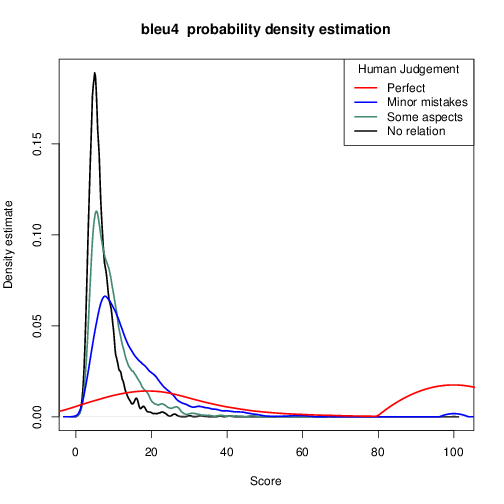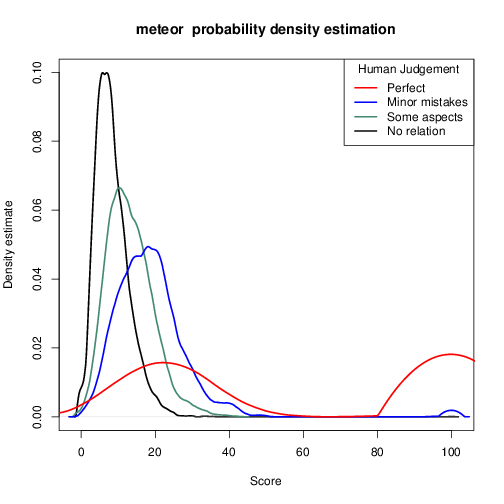Estimate the correlation of different text-based evaluation measures for Automatic Image Description. This is the code used in Elliott and Keller (2014). We repackage the descriptions and judgements from Hodosh et al. (2013), and include several other packages to ease calculations of the co-efficients. The code calculates the co-efficients for BLEU4, TER, Meteor, and ROUGE-SU4 using the Flickr8K corpus. However, this can be extended to any sentence-level evaluation measure and any corpus.
Depends on:
- Python 2.7+
- R 3.1.2+
- Java 1.6+
- Multeval
- ROUGE 1.5.5
- PythonRouge
- Perl and the XML.DOM library
We used the Flickr8K data set, expert human judgements, tokenized the text with Stanford CoreNLP PennTreebank Tokenizer with COCO custom punctuation removals. Note, this table is slightly different from our ACL paper because here we tokenized the text and include the recently proposed CIDEr measure.
| Spearman's rho | |
|---|---|
| CIDEr | 0.581 |
| Meteor | 0.560 |
| BLEU4 | 0.459 |
| ROUGE-SU4 | 0.440 |
| TER | -0.290 |
You have candidate descriptions $cand, multiple reference descriptions
$ref-1, $ref-2, ... and human judgements stored in a common directory
$data.
In our ACL'14 paper, we performed no tokenization. It is likely that you could increase the correlation co-efficients if you perform these steps but it may lead to reproduction errors.
-
(Optional) Tokenise the text. Run
python ptbtokenizer $filein thetokenizerdirectory.$fileis the path to the original file. We use the exact tokenizer available in the Stanford Core NLP package. -
Split the text files into one file per description. Run
python prepareROUGECandidates.py $cand, to split the candidates into individual files. Runpython prepareROUGEReferences.py $ref{1,2,...}to split the references into individual files. You need to do this for the ROUGE-SU4 calculations.
-
Calculate the Smoothed BLEU4, TER, and Meteor scores Run
./multeval.sh eval --refs ../$data/$ref-* --hyps-baseline ../$data/candidates --meteor.language en --sentLevelDir ../$data/sentLevelfrom themultevaldirectory. Note, themulteval.shscript downloads the METEOR paraphrase dictionaries on the first run, which may take a while. -
Calculate the ROUGE-SU4 scores Run
./rougeScores.sh $data/perline-candidates $data/perline-ref-0 5directory.
-
Extract the Smoothed BLEU4, TER, and METEOR scores from the sys1.opt1 file. Run
python extractMultEvalScores.py $data/sentLevel/sys1.opt1, where$datais the path to the descriptions data. -
Extract the ROUGE-SU4 scores from the
ROUGE_resultdirectory. Runpython extractROUGEScores.py. This extracts the ROUGE-SU4 recall scores for each candidate into ROUGE_result/rougeScores. -
Append the ROUGE scores to the Multeval scores. Run
python appendNewScores.py $newScoresFile $label $data/sentLevel/sys1.opt1, where$newScoresFile$ contains one number perline for each candidate sentence, and$label` is a human-readable label for the number. -
Calculate the correlations and plot the score distributions. Run
Rscript calculateCorrelation.R $scoresFile $judgementsFile.
Visualising the probability density estimates for evaluation measures can offer additional insight into the differences between measures. In the density visualisations below, we can see that BLEU4 struggles to separate three of the four classes of human judgements. Meteor does a much better job of separating descriptions that are Not Related from descriptions that have Minor Mistakes.

